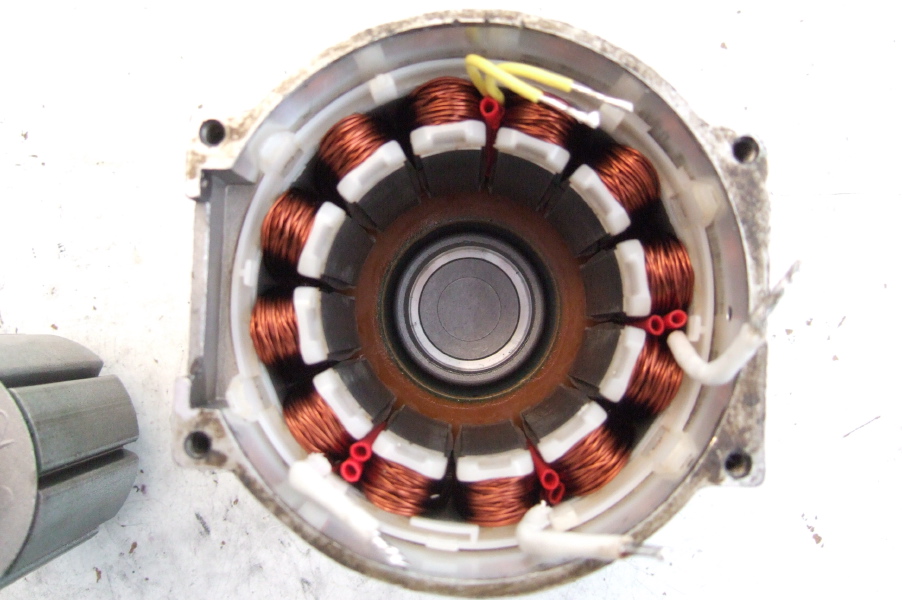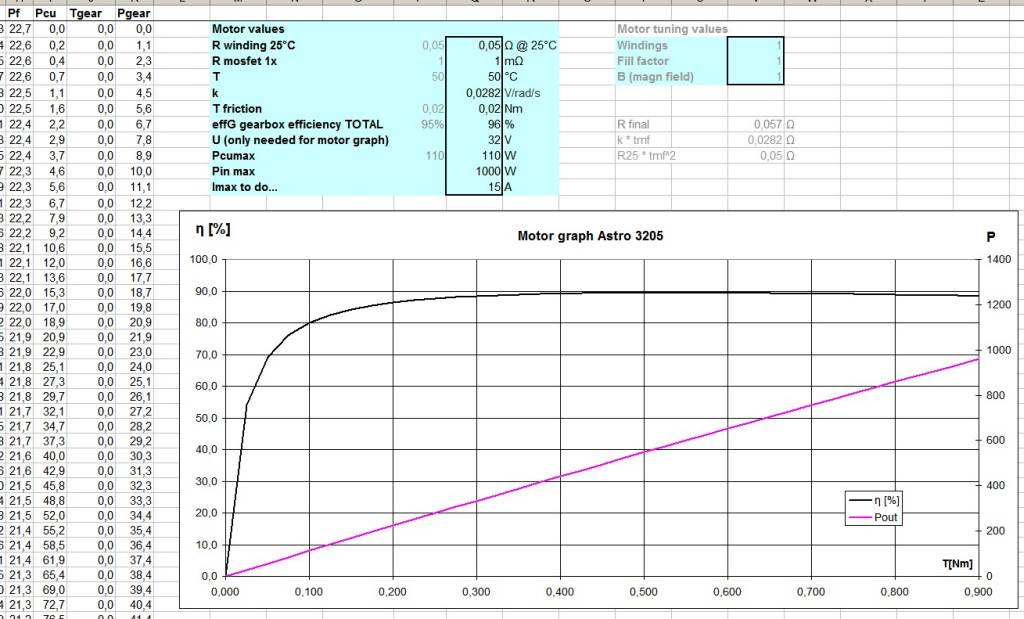I found my old notes where I had measured the phase resistances of two different Cyclone motors, both of them the standalone (w/o internal controller) motors that have the same characteristics as the "500 watt" motor, but without the internal controller. The "500 watt" motor looks the same as the "350 watt" motor except that the "500 watt" motor is longer axially by about 10mm.
The "500 watt" motor has a kv of approximately 125 rpm/v. As I recall the "350 watt" motor has a slightly higher kv, maybe around 135 or 140.
Motor 1:
phase 1: 68 mOhm
phase 2: 67 mOhm
phase 3: 67 mOhm
Motor 2:
phase 1: 73 mOhm
phase 2: 71 mOhm
phase 3: 76 mOhm
Paco of Cyclone Taiwan told me once that the Cyclone motors are Wye wound, although I did not verify that.
sigimem said:
don't the cyclone motors have a planetary gearbox 1 stage reduction?
edit: just read total reduction. A bicycle chain is supposed to have 98% efficiency. So two means 0.98*0.98=0.96. 4% loss 0.87*1.04= 90.5% efficiency for the planetary gearbox seems ok for me considering it has straight gears.
if the reduction system has 13% loss the motor efficiency is 74%*113% so 0.74*1.14=0.836 83.6% just saying.
If we're looking at a system efficiency (0.74) and trying to back out the effect of the drivetrain (eff=0.87) so that we isolate the motor's efficiency, we'd calculate: motor eff = 0.74 / 0.87 = 0.85. This is a reasonable figure.
Somewhere in some thread on E-S Jeremy Harris remarked that he had tested a bunch of different mass-produced BLDC motors in the 1/2 - 2 hp range appropriate for e-bike use. He discovered that the peak efficiencies of his motley collection were all within about 10% of each other. Based on my testing over the years I'd have to agree.






